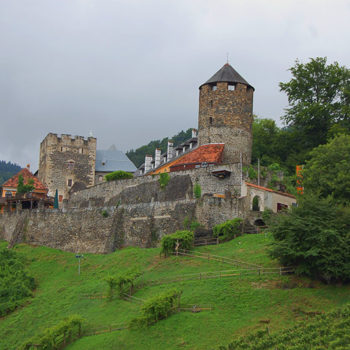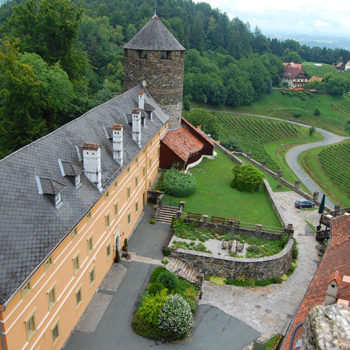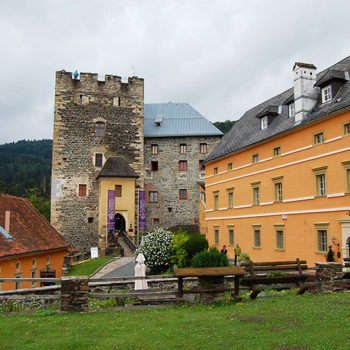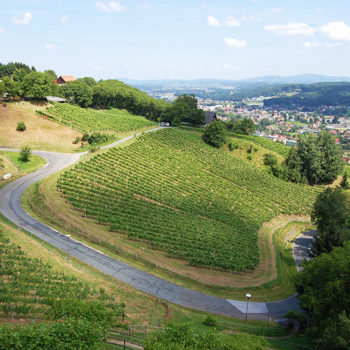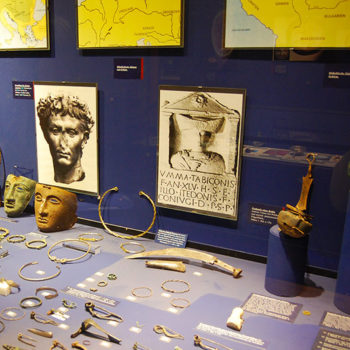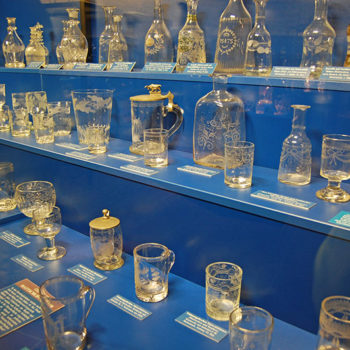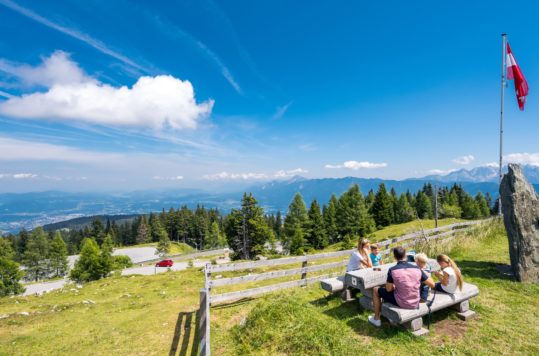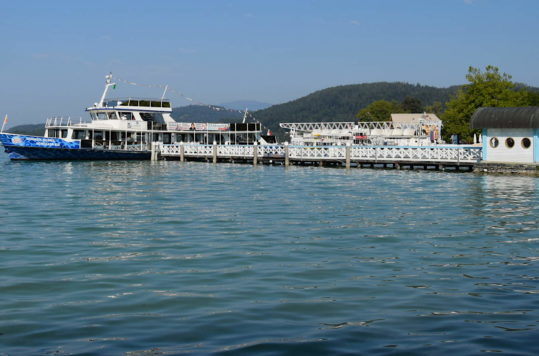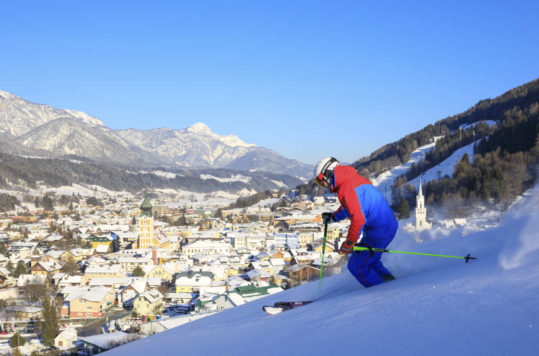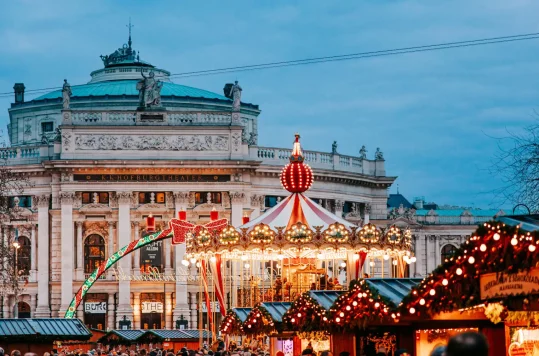Deutschlandsberg Castle is not just a stunning relict from the Middle Ages, but also a great place for a interesting journey through time.
Our first visit to Burg Deutschlandsberg was on a grey and cloudy day, which gave the Castle a slightly scary appearance. This is probably the meaning of a castle, anyway. However, we later visited the Castle several times on lovely sunny summer days, when it showcased itself from a more welcoming side.
Hotel, restaurant, and museum
On a foothill of the Koralpe, which merges into the Laßnitztal and West Styrian hill country, Deutschlandsberg Castle rises on a rocky spur, excellently protected by its natural location. The Castle is well worth a visit as it offers more than just the fortifications. The Castle houses a restaurant in what was once the knight’s hall, located on the outer wall. The restaurant also has a terrace with great views of the valley below and the small town of Deutschlandsberg. Around the Castle, several vineyards make for a lovely view.
Furthermore, there is also a hotel in the part of the Castle that was built in 1604. The finest suite is located at the top of the round tower. A castle is a popular place for wedding parties. Additionally, you will find an archaeological and historical museum in the Castle.
< Click on the image to enlarge >
Brilliant archeologic museum
The Archeo Norico Museum is located in the Gothic castle keep and the former residential wing. Although it does not look like this from the outside, the museum offers several extensive exhibitions, with more than 5000 objects from almost 7000 years. Archaeological finds from the Copper Age/Paleolithic period provide evidence of an early occupation of the later castle area dating back over 6500 years. You can study artefacts from ancient and Roman times, from the mythical Celts, an extensive weapons exhibition, 3000 years of glass production in Styria, and a life-like torture chamber in the basement. Regardless of the period of interest, you find plenty of fascinating objects on display, which provide deeper historical insights. Finally, you can access the viewing platform at the top of the square castle tower through the museum.
ADVERTISEMENT
A site with a long history
It has been in use since the medieval castle was built on the hill by the Lassnitz River. Remains of buildings and fortifications dating back to 3900 BC have been found. The castle was built in the 1100s and was mentioned for the first time in documents from 1185. Since then, the castle has been rebuilt several times before it got the look it has today in the late 1800s. From the 12th century until 1803, Burg Deutschlandsberg was the administrative centre for the lands in West Styria that belonged to the Archdiocese of Salzburg. The castle has not only been an administrative centre but has also seen combat. In 1532, the castle resisted attacks by the Turks (Ottoman Empire). Between 1820 and 1932, the castle belonged to the Principality of Liechtenstein (which today owns the medieval castle Riegersburg, only about 1 hour away by car).
Some highlights of Burg Deutschlandsberg include:
- The medieval castle architecture, which dates back to the 12th century
- The stunning panoramic views of the surrounding countryside from the castle’s vantage point
- The museum and exhibition spaces within the castle, showcasing the history and culture of the region
- The well-preserved inner courtyard, complete with historic features and beautiful gardens
- The opportunity to explore the castle’s towers, dungeons, and other unique architectural elements
- The on-site restaurant and cafe offer delicious regional cuisine and wines
- The various events and performances held at the castle throughout the year, such as concerts, festivals, and medieval reenactments
The small town of Deutschlandsberg
Deutschlandsberg, with its 11,000 inhabitants at the foot of the castle, is a pleasant place to stroll around for 1-2 hours. The main street, which has the finest historic buildings, consists of shops, banks, and restaurants. Deutschlandsberg has been a market town since 1280. Moreover, it is a good starting point for mountain excursions, as the road over the Weinebene mountain pass (the border between Styria and Carinthia) passes just outside the city.

